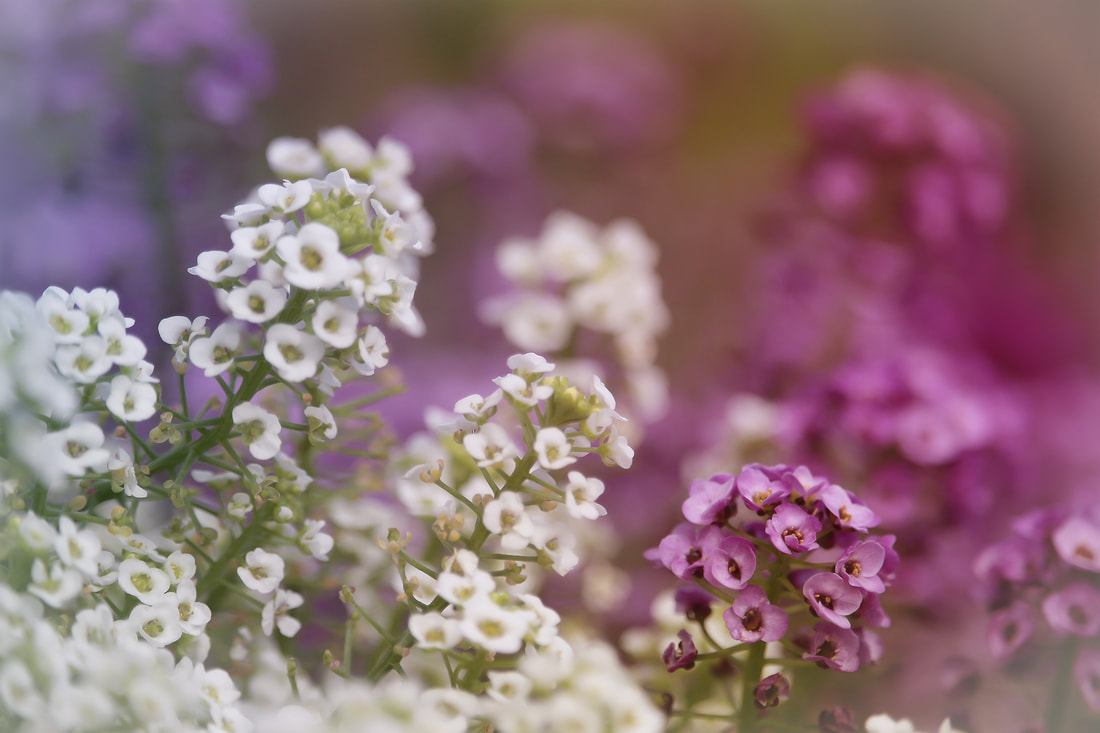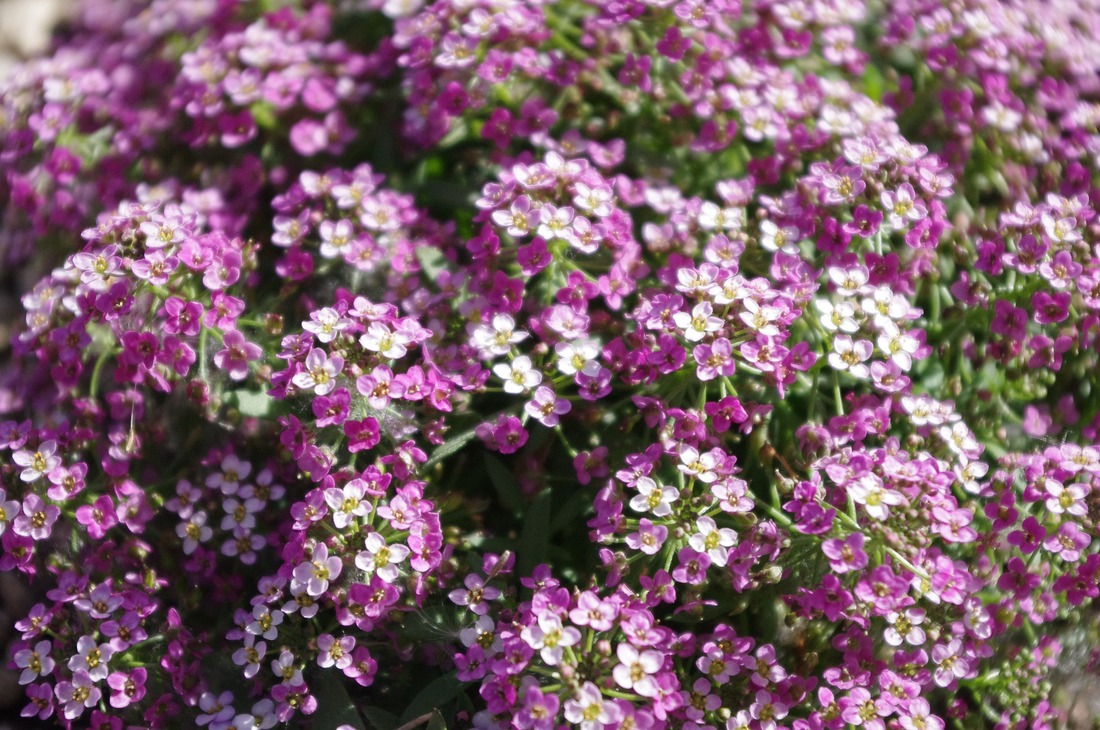How to Grow Sweet Alyssum
Sweet alyssum has always been one of my favorite annual flowers — partly because of its heavenly scent and partly because of its delicate flowers that look like mist floating in the breeze. This versatile plant is equally at home in planters and hanging baskets as it is as a ground cover, but my favorite location is a window box outside my kitchen window where its fragrance wafts through the window on cool summer breezes.
Growing Requirements for Sweet Alyssum
Light: Alyssum prefers full sun to partial shade but is not tolerant of the hot afternoon sun. Bright morning sun suits alyssum well. If you must plant it in an area that receives direct afternoon sun consider providing some shade during the hottest part of the day.
Soil: Plant alyssum in humus-rich, well-drained soil. For container plants, a mixture of equal parts peat moss, potting soil and perlite makes a good soil, as it provides adequate aeration, promotes drainage and prevents soil compaction.
Water: Water sweet alyssum when the soil feels dry to the touch as this plant prefers evenly-moist soil. Flowers and foliage wither and die quickly if water is withheld or the soil dries out excessively.
Fertilizer: Apply water-soluble fertilizer every 7 to 10 days, especially if you are growing alyssum in containers. Nutrients leach from the soil in containers with each watering and must be replaced to promote healthy growth.
Common Varieties of Sweet Alyssum
The most common variety of alyssum produces tiny pure white blooms, but alyssum isn't limited to white. This attractive flower can be pink, yellow, peach and shades of purple or red. Most grow to a height of 3 to 6 inches.
"Rosie O'Day" produces a cascade of rose-colored blooms, while the "Wunderland" series produces purple, white and pink blooms.
"Rosie O'Day" produces a cascade of rose-colored blooms, while the "Wunderland" series produces purple, white and pink blooms.
Uses for Sweet Alyssum
Alyssum can be grown as a ground cover or as edging in flowerbeds, but is most often used in hanging baskets, window boxes or container gardens.
Plant seedlings near the edge of the container to allow it to cascade over the sides.
Adding alyssum to rock gardeners or topping a rock wall creates a mass of floating flowers that perfume the air.
Plant alyssum in fragrance gardens or butterfly gardens to attract flying insects that grace the bed with movement and color.
Plant seedlings near the edge of the container to allow it to cascade over the sides.
Adding alyssum to rock gardeners or topping a rock wall creates a mass of floating flowers that perfume the air.
Plant alyssum in fragrance gardens or butterfly gardens to attract flying insects that grace the bed with movement and color.
Special Considerations
Alyssum’s blooming time depends on the specific variety you are growing and ranges from late spring to mid-summer, but alyssum tends to become scraggly during the hottest part of the summer.
If foliage becomes dry and blooming ceases, cutting it back to 2 inches and watering it thoroughly typically revives the plant and sends out a flush of new blooms to rival the original.
If foliage becomes dry and blooming ceases, cutting it back to 2 inches and watering it thoroughly typically revives the plant and sends out a flush of new blooms to rival the original.



